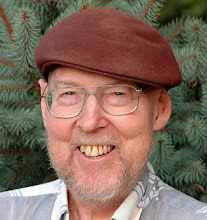| Last week Bangladeshi economist Muhammad Yunus won the Nobel Peace Prize because of how he responded to a famine in Bangladesh in 1974.
An economist educated at Vanderbilt University and then teaching at Chittagong University, he went to Jobra, a nearby village suffering from the famine. He described to an Associated Press reporter what happened next:
Sufia Begum was a 21-year-old mother of three when he met her in 1974 and asked how much she earned. She replied that she borrowed about five taka, the equivalent of nine cents, from a middleman for the bamboo for each stool.
All but two cents of that went back to the lender.
"I thought to myself, my God, for five takas she has become a slave," Yunus said in the interview.
The following day, he and his students did a survey in the woman's village, Jobra, and discovered that 43 villagers owed a total of $27
"I couldn't take it anymore. I put the $27 out there and told them they could liberate themselves," he said, and pay him back whenever they could. The idea was to buy their own materials and cut out the middleman.
Over the following year, they all paid him back — day by day.
“In order to get a loan from a bank you have to prove you don’t need it,” a friend once told me. In essence, banks do not loan money to poor people.
Yunus changed that. Out of his experience with the nearby villagers Yunus created a smart and friendly system of loans to the poor to help them launch businesses. When he approached banks in Bangladesh about loaning to the poor they refused unless he co-signed every loan.
Yunus went on to form Grameen, a bank that make business loans with an average size of $130 Instead of requiring collateral, Grameen “lent to groups of five people,” according to a New York Times story, “who helped ensure that each member repaid his or her share. It lent not only to farmers, but also to laborers and women who had a knack for crafts and shopkeeping. And it required borrowers to repay their loans in manageable, bite-sized weekly installments.”
Grameen’s smart and friendly system of loaning to the poor was soon adopted by others. “Last year,” said the New York Times story, “more than 100 million people received small loans from more than 3,100 institutions in 130 countries, according to Microcredit Summit, a Washington-based nonprofit advocacy group.” Wisdom for the week: Nonprofits can multiply the amount of good they do by developing smart and friendly systems.
Fare thee well, Rich |


No comments:
Post a Comment